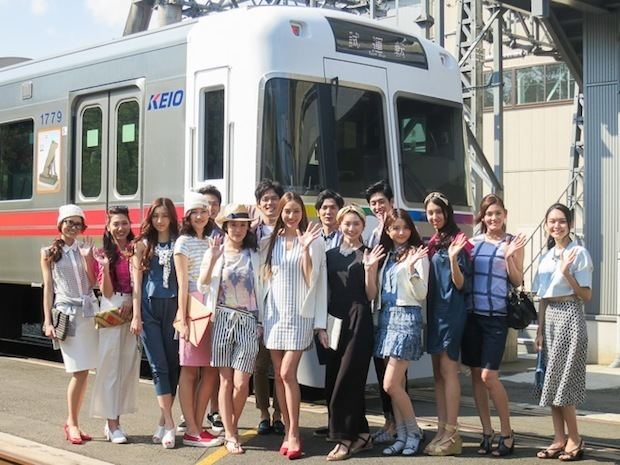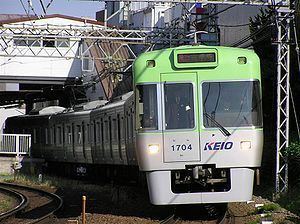Termini ShibuyaKichijōji Opened 1933 | Daily ridership 547,845 (2010) Rolling stock Keio 1000 series | |
Keio inokashira line driver s view from kichij ji to shibuya in japan
The Keio Inokashira Line (京王井の頭線, Keiō Inokashira-sen) is a railway line operated by the Japanese private railway operator Keio Corporation in the western suburbs of Tokyo, connecting Shibuya in Tokyo with Kichijōji in Musashino City. It is not physically connected to the Keio Main Line Network, but a transfer is available at Meidaimae Station. This line is 1,067 mm (3 ft 6 in) gauge, unlike other Keio lines which are 1,372 mm (4 ft 6 in) gauge.
Contents
- Keio inokashira line driver s view from kichij ji to shibuya in japan
- Keio inokashira line driver s view from shibuya to kichij ji in japan
- Operation
- Stations
- History
- Rolling stock
- Former rolling stock
- References
Keio inokashira line driver s view from shibuya to kichij ji in japan
Operation

Keio operates two types of trains on the line: all-stations "Local" (各停, Kakutei) (or Kakueki Teisha (各駅停車)) services and limited-stop Express (急行, Kyūkō) services. During the daytime off-peak, two locals and one express operate every 12 minutes on the line.
Stations
All stations are in Tokyo.
History

The line opened in 1933, dual track connecting Shibuya in Tokyo to Inokashira-kōen, owned by Teito Electric Railway (帝都電鉄, Teito Dentetsu), part of the Odakyu Group. The track gauge used was the same 1,067 mm (3 ft 6 in) as for other Odakyu lines, and the overhead power supply was 600 V DC. The line was extended to Kichijōji in April 1934. In May 1940, the company merged with the Odakyu Electric Railway, and on 1 May 1942, Odakyu merged with Tokyo Yokohama Electric Railway (東京横浜電鉄) to become a part of Tokyo Kyuko Electric Railway (present-day Tokyu Corporation), with the Teito Line renamed the Inokashira Line.
After World War II, Greater Tokyu was divided, and the Inokashira Line came under Keio ownership.

A line known as the Daita Link Line (代田連絡線, Daita-renraku-sen) connected Daita-nichōme Station (now Shindaita Station) on the Inokashira Line with Setagaya-Nakahara Station (now Setagaya-Daita Station) on the Odakyū Odawara Line from June 1945, but this was closed in 1952. The track and overhead wire was entirely removed in 1953, although some traces of the trackbed remain today.

Two stations, Tōdaimae (東大前駅, Tōdaimae-eki) and Komaba (駒場駅, Komaba-eki), closed in July 1965 and were replaced by a new station, Komaba-Tōdaimae Station.
From 25 February 1969, following the voltage being increased to 1500 VDC, air-conditioned trains were introduced on the Inokashira Line. From 30 April 1971, the 3000 series trains were lengthened to 5-cars, and from 15 December 1971, limited-stop "Express" services started.
From 22 February 2013, station numbering was introduced on Keio lines. Inokashira Line stations were numbered prefixed with the letters "IN".
